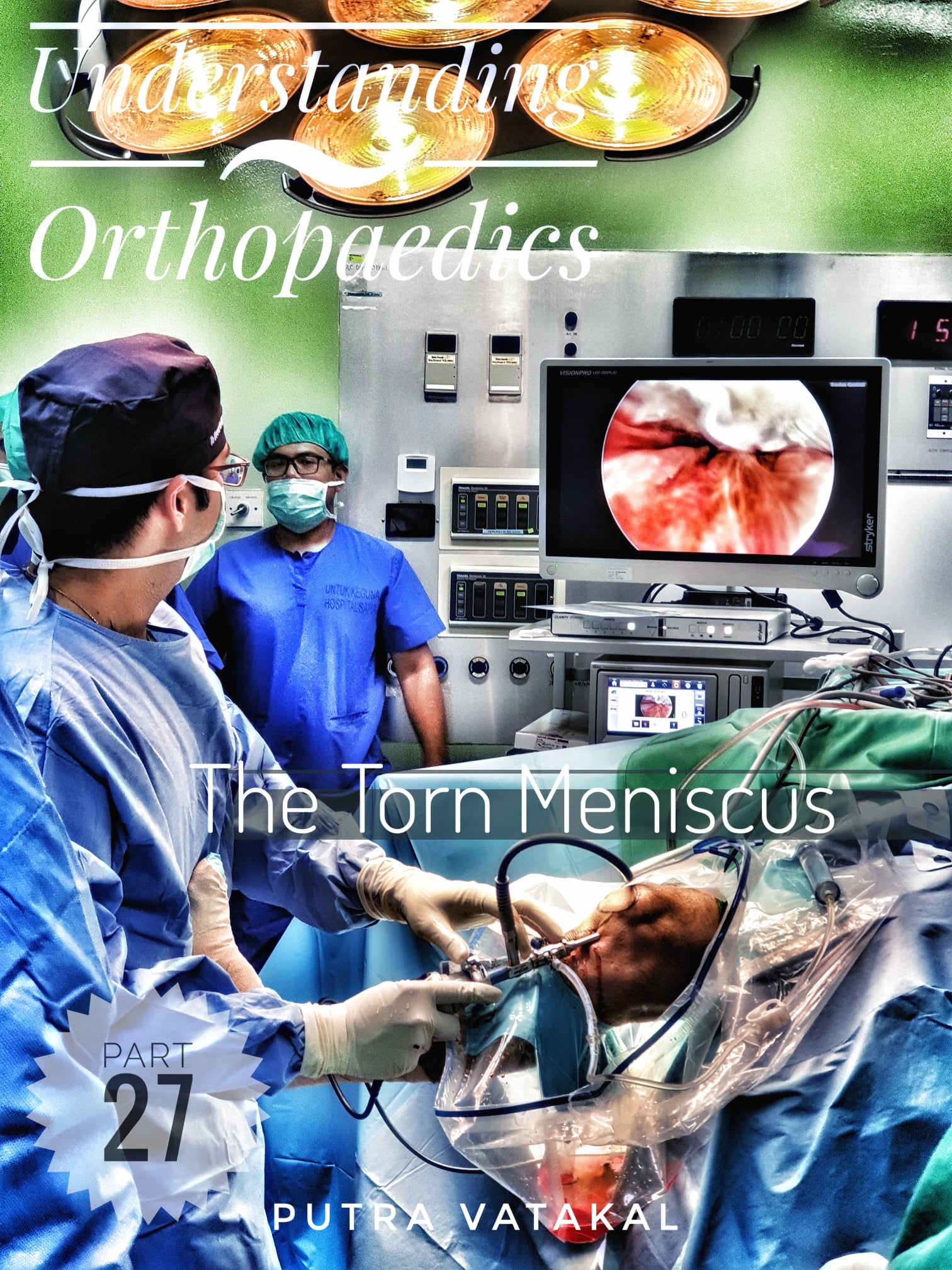
Aisyah cradled her knee in her hands. Dr Nik Haziman Wan Hamat crouched beside her on the wet grass of the rugby pitch, rummaging in his bag for an ice-pack.
“I can carry on, Doc Nik,” Aisyah panted hard as he wrapped her painful knee in a towel and laid on the ice. Drizzle drops pelted her grimacing face.
“Don’t let Coach take me out… please..” She said.
The crowd roared over the rolling thunder as Aisyah raced back onto the pitch.
Doc Nik watched – arms folded and frowning – as she led the team to victory.
8 weeks later Aisyah lay on my operating table, knee bathed in iodine.
__________
Dr Ikhwan Abd Samad held out his hand to take the end of my sterile gown. A swirl, a quick stab and some minutes later, the 4.5 millimetre camera was inside Aisyah’s knee.
“Suprapatellar pouch, medial and lateral knee gutters look clear,” said Ikhwan over my shoulder.
“There’s a medial meniscus bucket- handle tear. See how it’s flipped into the joint?” I said, watching the arthroscopic display.
And so the repair began.
__________
The first time I heard of something called a ‘meniscus’ I was a rowdy 16 year old in Maheran Hamenudin’s Chemistry class.
A long time has passed since then, and today when I say ‘meniscus’, I hardly think of liquids pressed up against the walls of a pyrex test tube.
In the human body, a meniscus is a soft piece of flesh shaped somewhat like a crescent moon that lies within your knee. Two of them in each knee, actually.
You may have noticed (or perhaps chewed upon) such a soft cartilage-like structure while snacking on a fried chicken drumstick. ![]()
I usually tell my patients they are natural shock absorbers. The reality is they do so much more than that – helping stabilise your knees, and allowing them to glide easily as you walk and run.
As we age, the meniscus dries out and becomes less flexible, making it – like most other parts of our bodies that lose their flexibility – prone to injury and tears.
(This is precisely why we warm up our stiff muscles and joints before we exercise.)
Small meniscus tears sometimes cause just the occasional knee discomfort, and can be treated by strengthening the muscles that surround the knee.
Large and complex tears however can be very painful, and can flip over and get jammed between the bones of the knee, a condition known as a ‘locked knee’. These are the kind that usually see you pushed into a dark magnetic tunnel ( an MRI scanner), and in some cases, you end up in the operating room.. like Aisyah.
Thankfully, surgery to repair a torn meniscus is not overly traumatic these days.
Where (in the past) a large incision down the centre of your knee may have been needed, today’s arthroscopes get away with two (perhaps 3) tiny sub-centimetre cuts that allow us to look inside your knee, and perform repairs without damaging sensitive tissues.
There’s less bleeding, less scarring, and less time in hospital (most are allowed home within 1-2 days after surgery) – which ticks most boxes.
Still, even minimally-invasive surgery isn’t exactly like having your hair cut or a day at the spa. Most surgeons prefer to prescribe a short period of walking using crutches after repairing a meniscus – to allow the repaired tissues time to strengthen before you load them by walking on them.
So it’s a good idea to talk to your friendly orthopaedic surgeon about it so that you’ll know exactly what to expect.
___________
Aisyah is back on the rugby pitch now (as much as CMCO allows, anyway) – two tiny scars on her knee the only signs of her meniscus injury.
And while Aisyah is not her real name, she has a message for you – to stretch and warm up properly before exercising to avoid injury.
And while you’re at it, perhaps it’s a good idea to strengthen your knees too.
Originally written on 8 November 2020 in Sungai Buloh Hospital, Selangor
Note: Names have been changed to protect patient privacy
Image Credits: Dr Ruqnuddin Al Hamdi